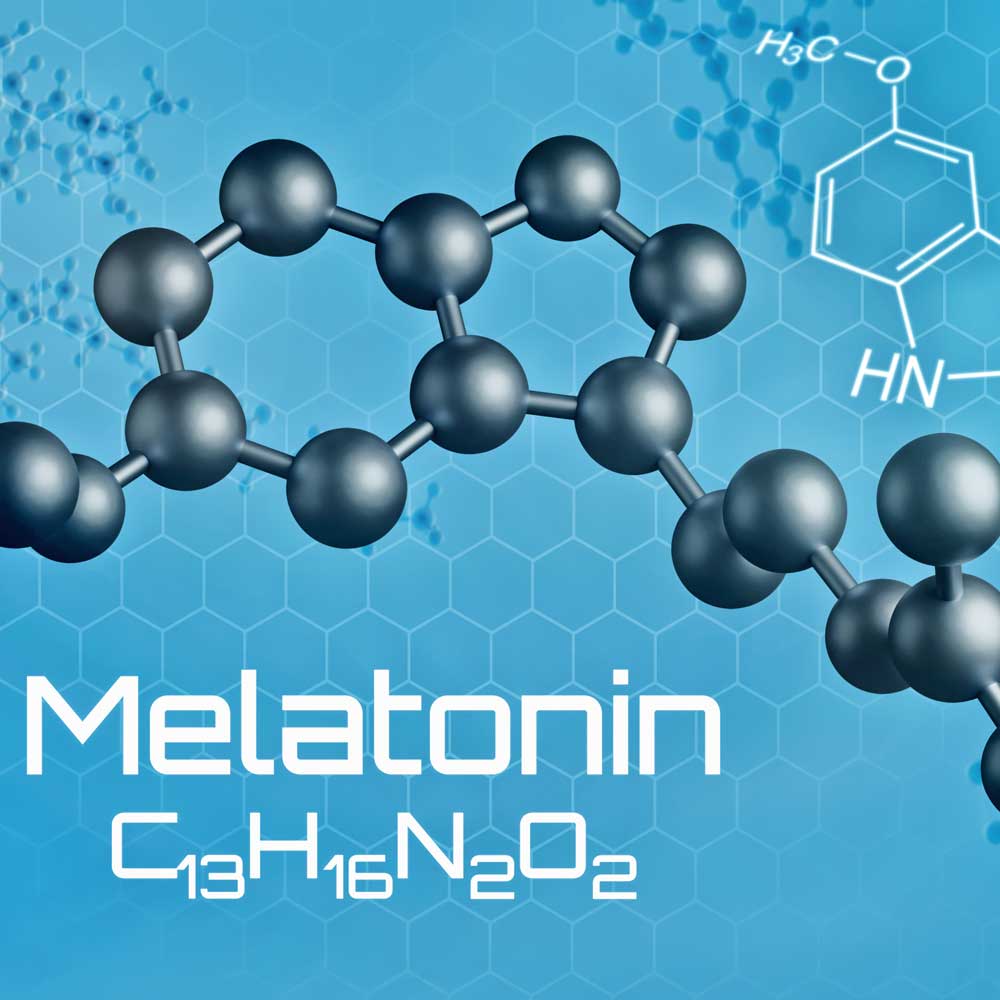Latest Facts
Medical Studies on Melatonin – Latest Facts

You want to get a fast overview on the latest research on melatonin and its multiple applications? – In this category you will find the most important studies listed separately; of course, these are also assigned to the respective subject areas.
The selection of the presented papers was made by the scientific committee of Interchron, the international forum for chronobiology, and it will be updated continuously.
Medical Studies on Melatonin – Latest Facts
There is a growing appreciation that the regulation of the melatonergic pathways, both pineal and systemic, may be an important aspect in how viruses drive the cellular changes that underpin their control of cellular function.
The imbalance between pro-oxidant and antioxidant systems often leads to further oxidative damage in the pathogenesis of both diabetes and periodontal disease. This study aimed to investigate the antioxidant and anti-inflammatory properties of melatonin in type 2 diabetes mellitus (T2DM) patients with periodontal disease (PD) under non-surgical periodontal therapy (NSPT).
Our study aimed to assess the impact of one night of slow-wave sleep (SWS) suppression on glucose tolerance, and explore whether melatonin plays a role in glucose tolerance impairment after SWS suppression.
The neuromodulator melatonin synchronizes circadian rhythms and related physiological functions via actions at two G protein-coupled receptors: MT1 and MT2.
To investigate the effect of adding melatonin to hypothermia treatment on neurodevelopmental outcomes in asphyctic newborns.
To study whether melatonin treatment can increase clinical pregnancy rate and live birth rate in assisted reproductive technology (ART) cycles.
The past decade has witnessed a revival of interest in the hormone melatonin, partly attributable to the discovery that genetic variation in MTNR1B – the melatonin receptor gene – is a risk factor for impaired fasting glucose and type 2 diabetes (T2D).
Cancer incidence is 24% greater in children and young adults exposed to Computed Tomography (CT) scans than those unexposed. Non-repair of ionizing radiation-induced DNA double-Strand Breaks (DSBs) can initiate carcinogenesis. In the present study, we aimed to investigate the radioprotective potential of melatonin against DSBs in peripheral blood lymphocytes of patients undergoing the abdomen-pelvis CT examinations.
Pharmacological interventions for sleep (analgesic, sedative and hypnotic agents) can both disrupt and induce sleep and have many negative side effects within the intensive care population. The use of complementary and alternative medicine therapies to assist with sleep has been studied but given the variety of modalities and methodological limitations no reliable conclusions have been drawn.
The bidirectional interaction between melatonin and the immune system has largely gone unexplored in a clinical context and especially in a psychiatric population. This study explored the association between melatonin during the day and inflammatory cytokines in young adult patients seeking psychiatric care.
Short sleep duration, recognized as a public health epidemic, is associated with adverse health conditions, yet little is known about the association between sleep and bone health. We tested the associations of usual sleep behavior and bone mineral density (BMD) and osteoporosis.
Circadian rhythm plays an important role as our internal body’s clock that synchronizes behavior and physiology according to the external 24-h light-dark cycle. Past studies have associated disrupted circadian rhythm with higher risk of miscarriages, preterm birth and low birth weights. This paper described the protocol of a prospective cohort study which aims to determine the circadian rhythm in pregnant women, identify its association with maternal factors during pregnancy, gestational weight gain, birth and infant outcomes.
Squamous cell carcinoma of the oral cavity (OSCC) is the sixth most common malignancy. Surgery is mainstay treatment for oral cancers. Surgery in locally advanced OSCC presents many challenges primarily because the head and neck have critical structures that can be damaged by tumor or treatment.
The available pharmacological modalities for the treatment of fibromyalgia (FM) are associated with a variety of adverse effects and limited benefits. In this study, we systematically reviewed the impact of melatonin in the treatment of FM.
Obesity is associated with increased general mortality and comorbidities, it is multifactorial and some evidence has shown that sleep duration and shift work may be implicated in its pathogenesis.
Parkinson disease (PD) is a chronic and neurodegenerative disease with motor and nonmotor symptoms. Multiple pathways are involved in the pathophysiology of PD, including apoptosis, autophagy, oxidative stress, inflammation, α-synuclein aggregation, and changes in the neurotransmitters.
Research indicates that sleep duration and quality are inter-related factors that contribute to obesity, but few studies have focused on sleep chronotype, representing an individual’s circadian proclivity, nor assessed these factors in racially diverse middle-aged samples.
Sleep is an essential biological phenomenon, being a physiological and behavioral process necessary for quality of life. Melatonin is a circadian hormone produced at night by the pineal gland, regulated by the light/dark cycle, under the control of the suprachiasmatic nucleus. Melatonin is an indoleamine, synthesized from the essential amino acid tryptophan via serotonin. Melatonin is also found in plants, where it helps fight oxidative stress. To present a systematic review on the ability of food sources of melatonin to promote healthy sleep.
New awakenings: current understanding of sleep dysfunction and its treatment in Parkinson’s disease.
The non-motor features of Parkinson’s disease (PD) are increasingly being recognised. This review deals with the spectrum of sleep disorders associated with PD, which have a multifactorial aetiology and can significantly have an impact on the quality of life of patients and their carers.
Sleep is an essential physiological process, especially for proper brain function through the formation of new pathways and processing information and cognition. Therefore, when sleep is insufficient, this can result in pathophysiologic conditions.